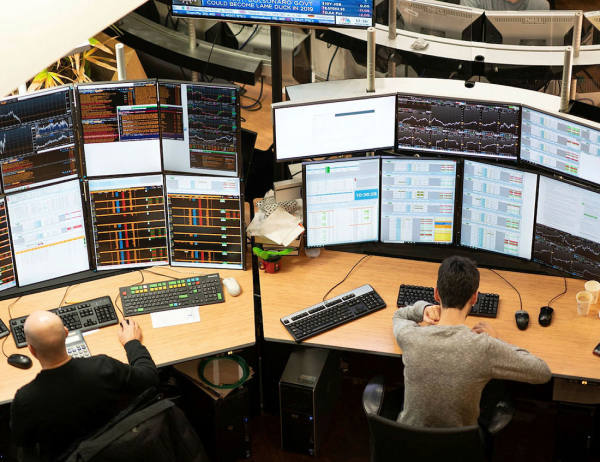Five months ago, the City of London Corporation published a ‘heat map’ of construction across the Square Mile.
Of the 9mn square feet under development – or the floorspace of 10 Cheesegraters or 18 Gherkins in old money – three-fifths was said to represent new, largely A-grade office space. With planning applications on the rise, and commuter journeys nudging higher, the corporation had some support for its case that “London is the best place to build and invest”.
Well, maybe. This week, the Financial Times cited data showing that large office buildings in the City are now “almost impossible to sell”. High borrowing costs and concerns around hybrid working mean nothing has changed hands for more than £100mn in 2024. Reportedly, Great Portland Estates (GPE) and Derwent (DLN) are among the major landlords to have tried and failed.
By now, we know the responses. The faithful (or invested) will argue that higher rates simply replaced the veil of uncertainty created by the pandemic, and that liquidity will improve once credit conditions ease. Doubters (and short sellers) will counter that we are still early in the ‘extend and pretend’ phase, and that the sector is in denial about its stranded assets.
The truth, as is often the case, will probably fall somewhere in between. But with hindsight, what we can say is that the deluge of capital flooding into commercial real estate in the years before 2020 was much more speculative than its contemporary rationale suggested.
With apologies for the lane shift, a similar dynamic may be happening in the technology sector.
Since OpenAI debuted ChatGPT-3 in late 2022, bets on the rise of artificial intelligence (AI) have been a one-way street. Even if you’ve taken an agnostic approach to this apparent paradigm shift, you’ll have likely benefited – unless you have consciously opted for zero exposure to US equities.
As was once the case with real estate, there is an inexorable logic to the AI investment case. Just as the exclusivity of the City’s skyline promised capital preservation and steadily rising income in a world of negative real yields, AI’s handful of super-beneficiaries now promise both winner-takes-all growth and a solution for a global economy desperate for a major productivity upgrade.
Like buying offices, the AI build-out has also been enormously capital intensive. A recent report from Goldman Sachs suggested that the “tech giants and beyond” are on course to commit more than $1tn (£780mn) to AI capital expenditure in the coming years, with hardware and cloud computing demand leading the spending bonanza charge. And that’s all before the investments in energy required to power the ballooning drain of AI systems’ ‘compute’.
Things get murkier when it comes to results. For AI to deliver on its promise, software developers will need to find a way to earn a return on the massive amounts of capital being invested. The chorus of doubters is growing. “AI technology is exceptionally expensive, and to justify those costs, the technology must be able to solve complex problems, which it isn’t designed to do,” says Goldman’s head of global equity research, Jim Covello. As such, parallels with the internet – which as Covello points out was a “low-cost technology solution” from the jump – may be overdone.
There is therefore a real risk that AI may be producing its own stranded assets. This doesn’t mean the technology is a busted flush, or that it won’t have an as-yet unheralded use case. After all, markets are steered by feedback loops and always find a way to evolve. Right now, even if some think it should be rent reductions, the biggest trend in City office development is retrofitting. But if Covello is right, a similar rethink of spending and expected returns may be in store for Silicon Valley before long.
Find more investment ideas in our Ideas Farm
Companies smashing broker forecasts
Shares hitting highs and lows
London's most shorted shares
Big director share deals this week
The IC Screens: performance dashboard





.png?source=invchron&width=600)
